Jeep Wrangler vs Volvo XC90 – Which one offers the better deal?
Everyday use, family trips or long-distance drives – here’s where the differences show.
Discover whether Jeep Wrangler or Volvo XC90 fits your lifestyle better.
Costs and Efficiency:
When it comes to price and running costs, the biggest differences usually appear. This is often where you see which car fits your budget better in the long run.
Volvo XC90 has a slight advantage in terms of price – it starts at 69800 £, while the Jeep Wrangler costs 69900 £. That’s a price difference of around 95 £.
Fuel consumption also shows a difference: Jeep Wrangler manages with 3.30 L and is therefore slight more efficient than the Volvo XC90 with 3.50 L. The difference is about 0.20 L per 100 km.
As for range, the Volvo XC90 performs clearly better – achieving up to 71 km, about 29 km more than the Jeep Wrangler.
Engine and Performance:
Power, torque and acceleration say a lot about how a car feels on the road. This is where you see which model delivers more driving dynamics.
When it comes to engine power, the Volvo XC90 has a slightly edge – offering 455 HP compared to 380 HP. That’s roughly 75 HP more horsepower.
In acceleration from 0 to 100 km/h, the Volvo XC90 is noticeable quicker – completing the sprint in 5.40 s, while the Jeep Wrangler takes 6.50 s. That’s about 1.10 s faster.
In terms of top speed, the Volvo XC90 performs hardly perceptible better – reaching 180 km/h, while the Jeep Wrangler tops out at 177 km/h. The difference is around 3 km/h.
There’s also a difference in torque: Volvo XC90 pulls to a small extent stronger with 709 Nm compared to 637 Nm. That’s about 72 Nm difference.
Space and Everyday Use:
Cabin size, boot volume and payload all play a role in everyday practicality. Here, comfort and flexibility make the difference.
Seats: Volvo XC90 offers distinct more seating capacity – 7 vs 5.
In curb weight, Volvo XC90 is barely noticeable lighter – 2080 kg compared to 2276 kg. The difference is around 196 kg.
In terms of boot space, the Jeep Wrangler offers clearly more room – 533 L compared to 302 L. That’s a difference of about 231 L.
In maximum load capacity, the Jeep Wrangler performs slight better – up to 2050 L, which is about 194 L more than the Volvo XC90.
When it comes to payload, Volvo XC90 clearly perceptible takes the win – 710 kg compared to 536 kg. That’s a difference of about 174 kg.
Who wins the race?
The Volvo XC90 proves to be wins the duel decisively and therefore becomes our DriveDuel Champion!
Volvo XC90 is the better all-rounder in this comparison.
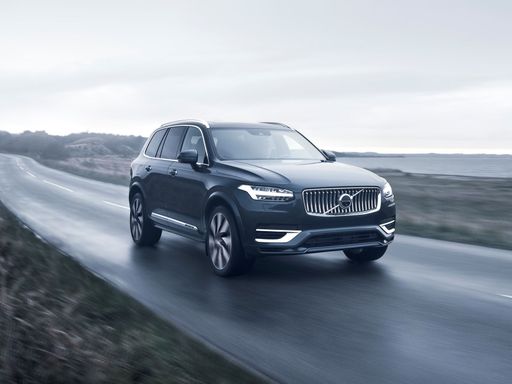
Volvo XC90
Jeep Wrangler
The Jeep Wrangler is a symbol of rugged adventure and off-road capability, renowned for its distinctive boxy design and iconic seven-slot grille. Its interior blends practicality with modern technology, providing a comfortable environment whether you're navigating city streets or challenging terrains. With a loyal fan base, the Wrangler continues to capture the spirit of freedom and exploration, making it a favourite among outdoor enthusiasts.
details @ media.stellantis.com
@ media.stellantis.com
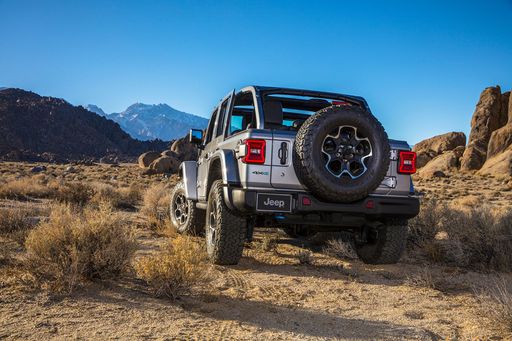 @ media.stellantis.com
@ media.stellantis.com
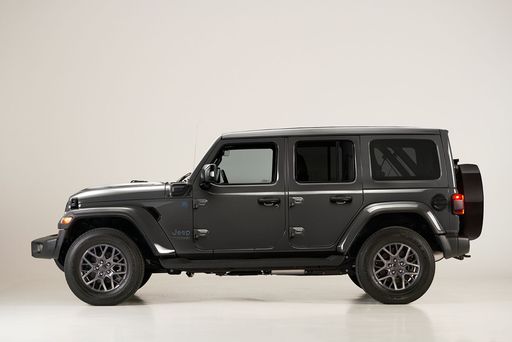 @ media.stellantis.com
@ media.stellantis.com
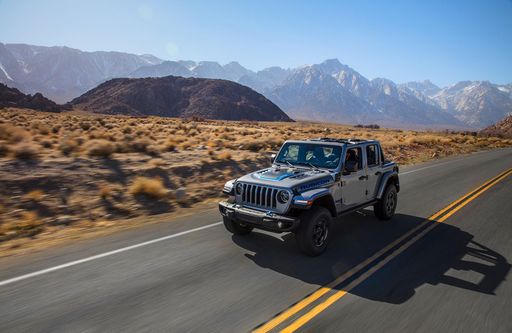 @ media.stellantis.com
@ media.stellantis.com
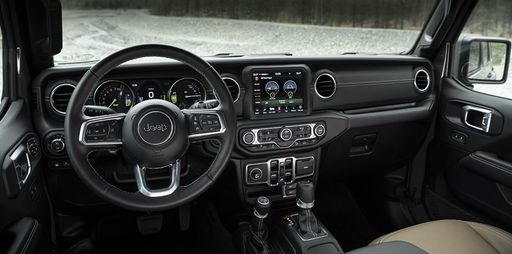 @ media.stellantis.com
@ media.stellantis.com
Volvo XC90
The Volvo XC90 stands out with its elegant Scandinavian design, seamlessly blending luxury with versatility. Inside, it offers a spacious and meticulously crafted interior, showcasing high-quality materials and advanced technology. The vehicle provides a comfortable and smooth driving experience, making it a popular choice for families and long journeys.
details @ media.volvocars.com
@ media.volvocars.com
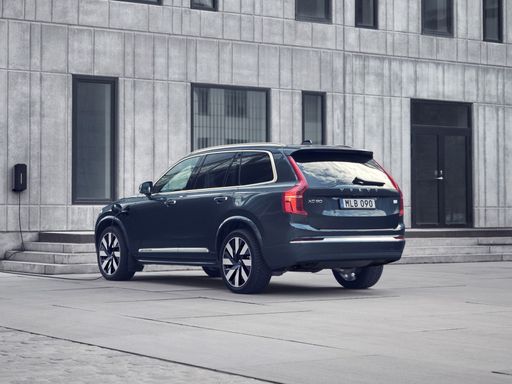 @ media.volvocars.com
@ media.volvocars.com
 @ media.volvocars.com
@ media.volvocars.com
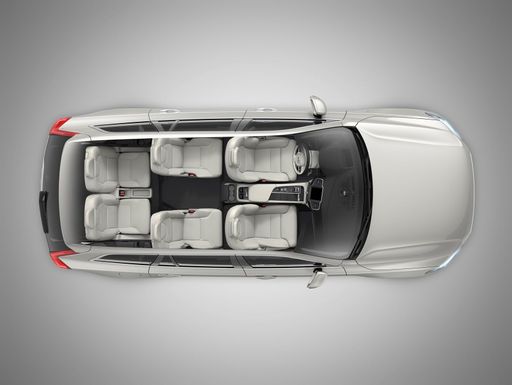 @ media.volvocars.com
@ media.volvocars.com
 @ media.volvocars.com
@ media.volvocars.com

|

|
|
|
|
Costs and Consumption |
|
|---|---|
|
Price
69900 - 71600 £
|
Price
69800 - 84600 £
|
|
Consumption L/100km
3.3 - 4 L
|
Consumption L/100km
3.5 - 8.5 L
|
|
Consumption kWh/100km
-
|
Consumption kWh/100km
-
|
|
Electric Range
38 - 42 km
|
Electric Range
71 km
|
|
Battery Capacity
-
|
Battery Capacity
14.70 kWh
|
|
co2
74 - 91 g/km
|
co2
79 - 191 g/km
|
|
Fuel tank capacity
65 L
|
Fuel tank capacity
71 L
|
Dimensions and Body |
|
|---|---|
|
Body Type
Off-Roader
|
Body Type
SUV
|
|
Seats
5
|
Seats
7
|
|
Doors
5
|
Doors
5
|
|
Curb weight
2276 - 2383 kg
|
Curb weight
2080 - 2297 kg
|
|
Trunk capacity
533 L
|
Trunk capacity
262 - 302 L
|
|
Length
4882 mm
|
Length
4953 mm
|
|
Width
1894 mm
|
Width
1923 mm
|
|
Height
1838 - 1848 mm
|
Height
1771 mm
|
|
Max trunk capacity
2050 L
|
Max trunk capacity
1816 - 1856 L
|
|
Payload
520 - 536 kg
|
Payload
653 - 710 kg
|
Engine and Performance |
|
|---|---|
|
Engine Type
Plugin Hybrid
|
Engine Type
Petrol MHEV, Plugin Hybrid
|
|
Transmission
Automatic
|
Transmission
Automatic
|
|
Transmission Detail
Automatic Gearbox
|
Transmission Detail
Automatic Gearbox
|
|
Drive Type
All-Wheel Drive
|
Drive Type
All-Wheel Drive
|
|
Power HP
380 HP
|
Power HP
250 - 455 HP
|
|
Acceleration 0-100km/h
6.50 s
|
Acceleration 0-100km/h
5.4 - 7.7 s
|
|
Max Speed
156 - 177 km/h
|
Max Speed
180 km/h
|
|
Torque
637 Nm
|
Torque
360 - 709 Nm
|
|
Number of Cylinders
4
|
Number of Cylinders
4
|
|
Power kW
280 kW
|
Power kW
184 - 335 kW
|
|
Engine capacity
1995 cm3
|
Engine capacity
1969 cm3
|
General |
|
|---|---|
|
Model Year
2024
|
Model Year
2024 - 2025
|
|
CO2 Efficiency Class
B
|
CO2 Efficiency Class
G, B
|
|
Brand
Jeep
|
Brand
Volvo
|
What drive types are available for the Jeep Wrangler?
The Jeep Wrangler is offered with All-Wheel Drive.
The prices and data displayed are estimates based on German list prices and may vary by country. This information is not legally binding.
